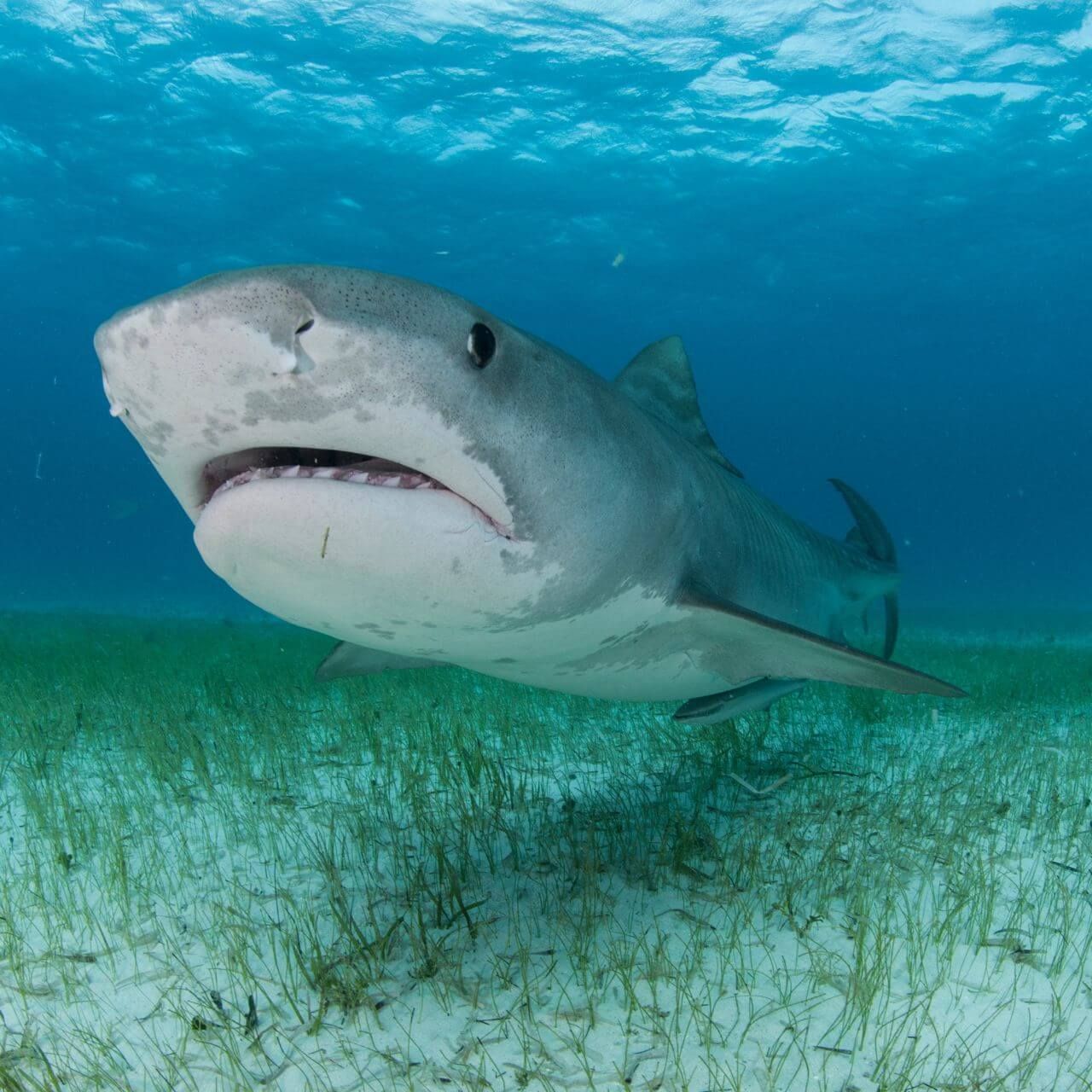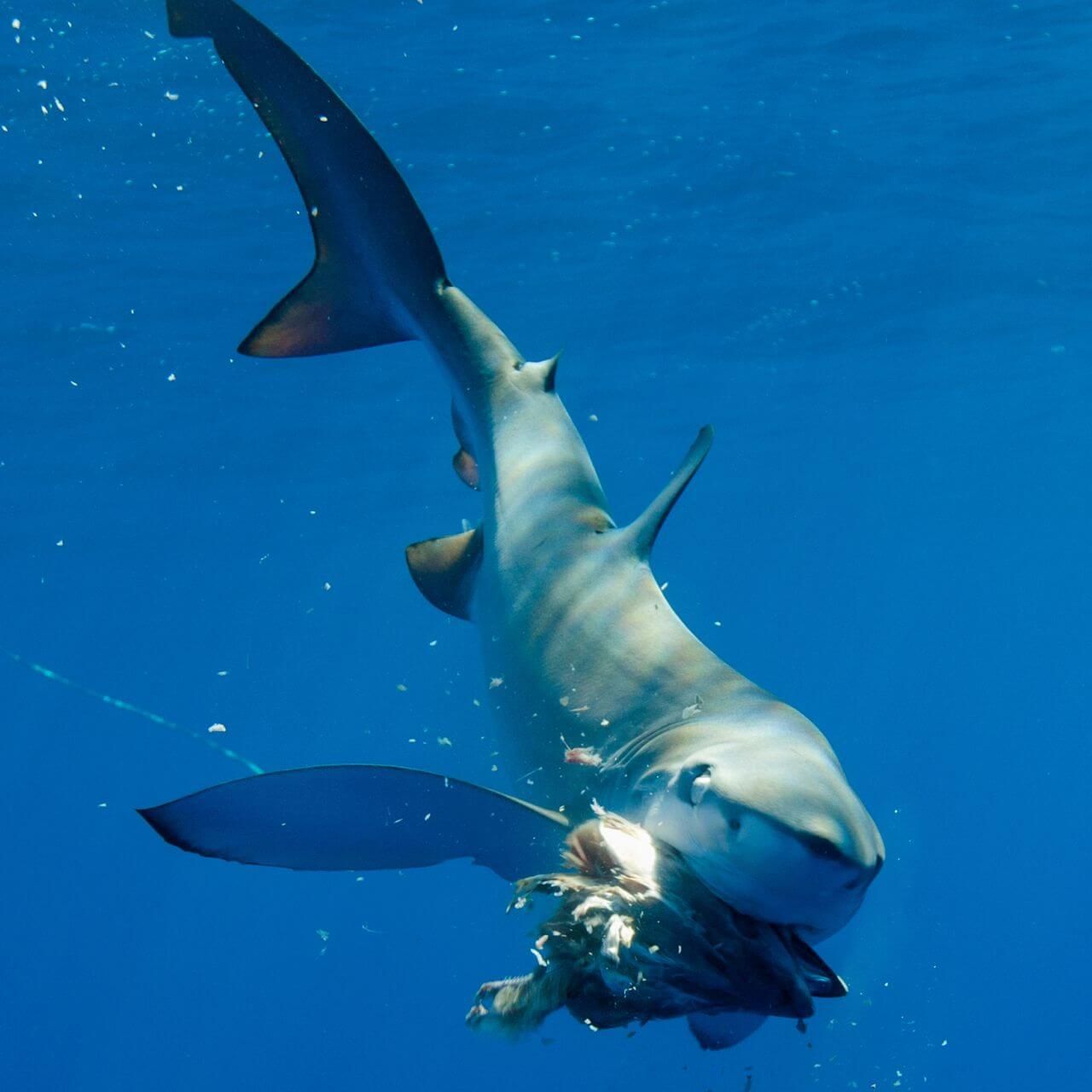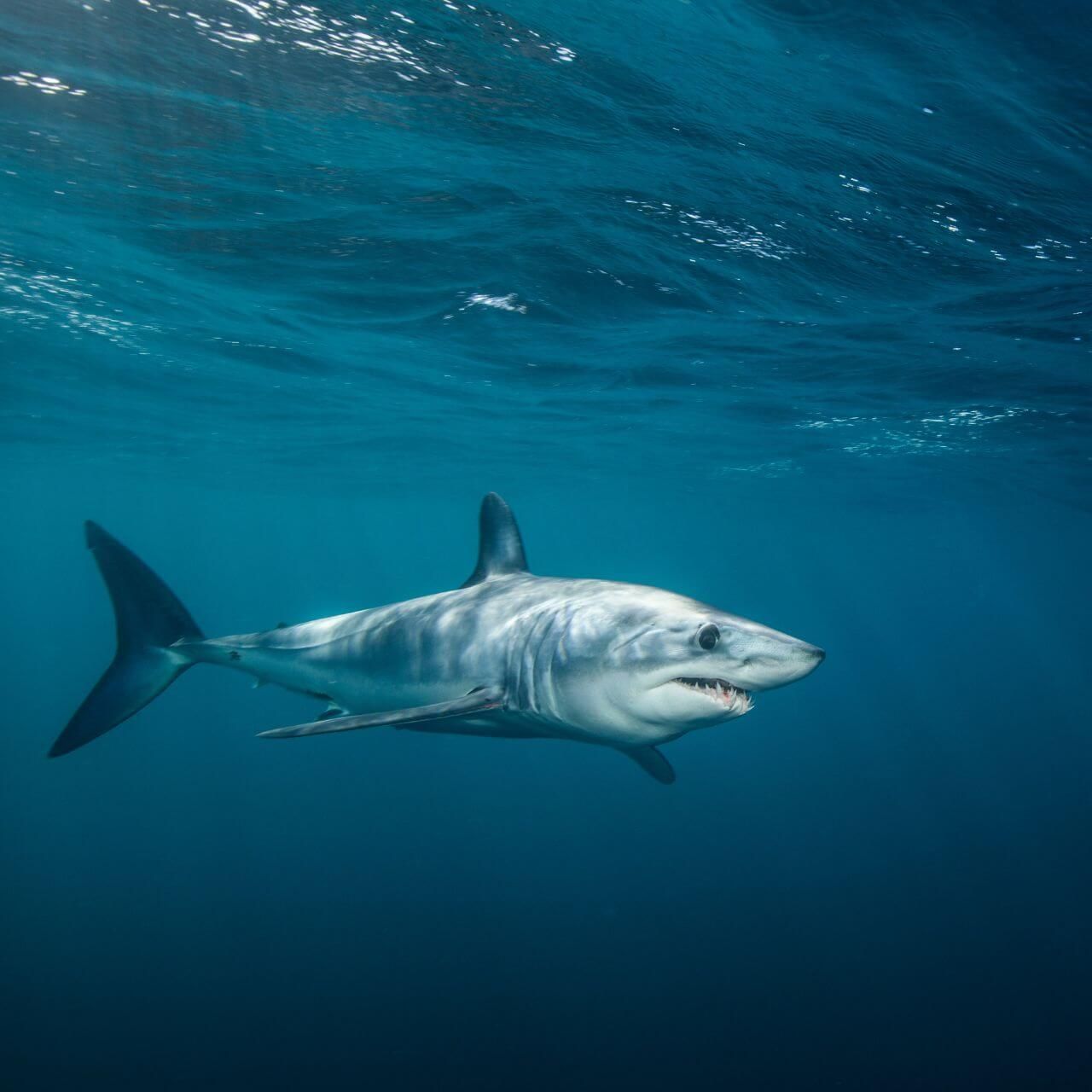Sharks

Let's Learn About Sharks
Word of the Week
Ampullae of Lorenzini
Sharks (and stingrays!) are able to detect changes in electrical fields around them using jelly-filled pores on their snouts called Ampullae of Lorenzini. This allows sharks to detect the faintest movement in the water while hunting!
If you look closely at this great white shark's snout, you'll see the ampullae.
Fast Facts

Where do sharks live?
In simplest terms, the ocean!
Sharks live in many ocean ecosystems, such as coral reefs, kelp forests, and the open ocean. Some larger species of sharks will migrate thousands of miles across the ocean. A handful of sharks have developed the ability to swim up rivers into freshwater, like the bull shark!
What do sharks eat?
Sharks are carnivores.
Different shark species have different food preferences. Most sharks feed on weak or sick fish, which actually helps keeps populations of fish healthy. Some sharks are specialists, like the whale shark who uses filter feeding to eat tiny organisms floating in the water. Some species of reef sharks have a pointed noise to reach deep into reefs for hiding fish.


What traits do sharks share?
Sharks share many traits!
- All sharks are cartilaginous fish (meaning their skeleton is made of cartilage).
- Sharks are covered in tiny scale-like structures called dermal denticles (which translates to "skin teeth," they're made out of the same stuff as our teeth!).
- Sharks are able to find prey by detecting changes in electrical fields using their ampullae of Lorenzini.
- Sharks have an excellent sense of smell and sight.
How many sharks are there?
It is estimated that more than 400 species of sharks exist, though there is quite a bit of debate.
As far as how many individual sharks exist, it is hard to say! Some estimates say more than 1 billion sharks swim in the world's oceans, though this would be challenging to determine. While 1 billion sharks may sound like a lot, don't forget that more than 70% of the planet is ocean - that is a lot of space for sharks to explore!

Species Spotlight
Horn Shark
Heterodontus francisci
Horn sharks are a small species of shark found along the coast of California and Mexico! They measure about 3 feet long and can be identified using their polka-dot pattern. Adult horn sharks typically spend their time in shallow, rocky reefs or beds of algae while young horn sharks can be found in deeper, sandy areas. They are typically solitary and nocturnal, hunting around the home ranges at night time. Their powerful, crushing jaws allow them to feed on hard prey like mussels, snails, crabs, and sea urchins, but they will also eat fish and other invertebrates like octopuses!
Perhaps the most unusual thing about a horn shark is that they are oviparous, meaning they lay eggs. And not just any egg! Horn sharks are one of nine species of bullhead sharks, an order of small sharks that lay spiral-shaped eggs. Their eggs are the color of algae and measure about 5 inches long. The pointy, spiral shape of the egg allows horn sharks (and other bullhead shark species) to wedge them deep into cracks in the reef where they will be safe until the baby shark is developed.
Conservation Corner
Shark Finning
Sharks have roamed the world's oceans for more than 400 million years but today, they're facing one of the greatest threats they've ever faced - humans. Humans impact nearly every ecosystem on the planet and, therefore, all the animals that live there. Unsustainable fishing practices of small fish have reduced the food available for sharks, but sharks themselves are fished, as well.
It is estimated that more than 70 million sharks are killed each year for their fins. In Southeast Asia, shark fins are used to make shark fin soup, a local delicacy that is often made for celebrations. Shark fins are also thought to cure diseases or have other medicinal value, but this is unproven. As shark populations quickly shrink, the entire ocean ecosystem is falling out of balance. We cannot have a healthy ocean without sharks. Governments around the world are starting to take action by banning shark finning, but you can help, too! Spread the world about the importance of sharks, make sure you favorite Asian restaurant does not serve shark products, and donate to organizations like Finfree to help protect sharks across the world.
Shark Challenge
Beginner
Cut out and organize shark traits to compare and contrast the 3 shark species above. Use the attached template.
Expert
Complete the attached chart to compare and contrast the three shark species above. Then describe the adaptations that help them thrive in their habitat.
Learn More!
Glossary
Adaptation
The process by which a species becomes more fit for its environment over the course of several generations. It is a result of natural selection.
Apex Predator
The animal at the top of its food chain; it has no natural predators.
Aquatic
Living in water.
Camouflage
The ability for an organism to blend into their surroundings usually to hide from prey or predators.
Cartilage
Flexible but firm connective tissue that makes up parts of the human nose and ears, along with shark and ray skeletons.
Dermal Denticle
Tooth-like scales that cover the exterior of sharks and rays.
Ectotherm
An animal that relies on the outside temperature to regulate their body temperature (reptiles and amphibians). Also known as cold-blooded.
Endotherm
An animal that regulates their body temperature internally (mammals and birds). Also known as warm-blooded.
Fish
A group of ectothermic (cold-blooded) animals that live primarily or entirely in water, have fins instead of limbs, and breathe using gills.
Gills
The respiratory organ that allows fish, amphibians in their larval phase, and crustaceans to absorb oxygen molecules from water.
Invertebrate
An animal that has no bones.
Poison
A toxin that is harmful when touched or eaten and is often produced through glands.
Predator
An animal that hunts other animals for food.
Prehensile
Able to grasp.
Prey
An animal that is hunted and eaten by another animal.
Species
A closely related group of animals with similar characteristics that are capable of reproducing (example: tigers).
Spiracle
A respiratory organ that pumps water through the gills of stingrays and some sharks and allows them to breathe while resting motionless (some invertebrates have spiracles that function differently).
Subspecies
A group of animals within a species that are genetically different from other groups in the same species (there are 6 subspecies of tigers).
Venom
A toxin that is injected into prey through teeth or a stinger.
Vertebrate
An animal that has a backbone.
Sign Up for our Newsletter
Stay up to date with new adventures, live classes, deals, and more!

Helpful Resources
*Please note we do not offer refunds for EdZOOcating Adventures memberships. We recommend you explore the 3-day free trial prior to subscribing!*




